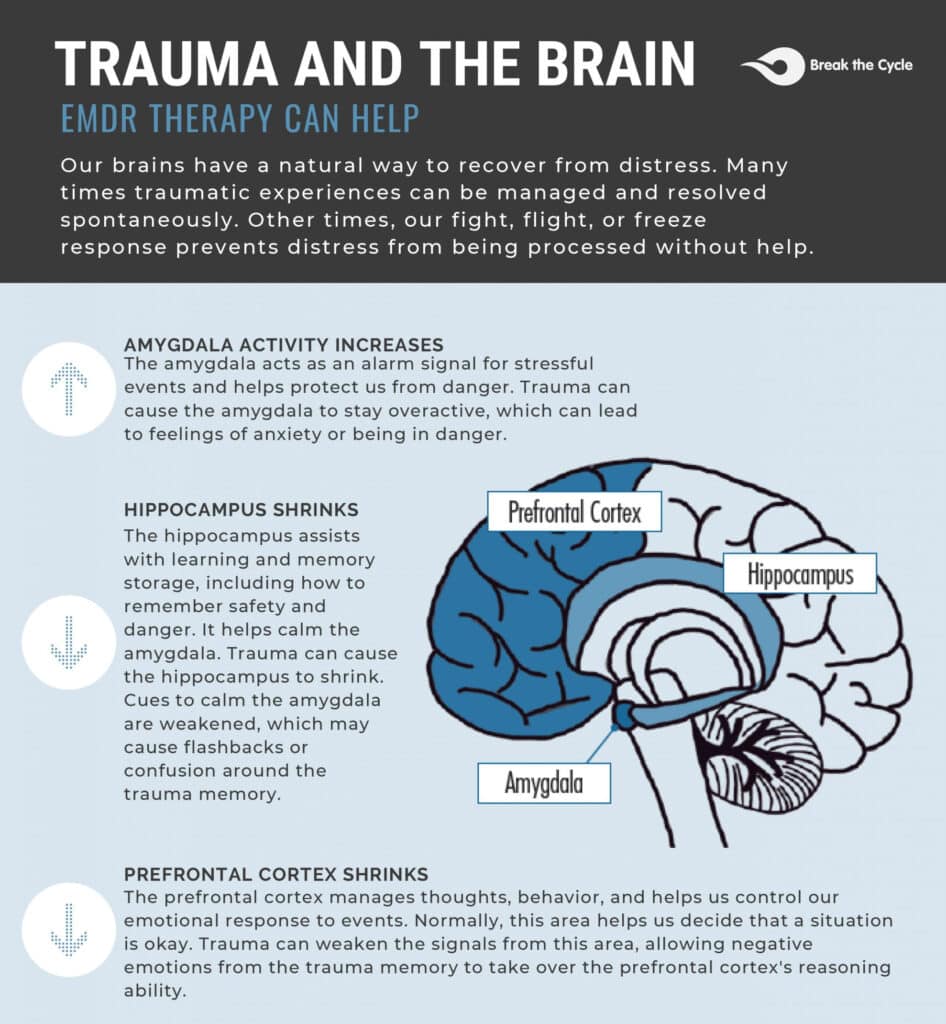The science behind emdr therapy and the success
Wiki Article
Exactly How EMDR Therapy Works: a Thorough Take A Look At the Process and Its Performance
EMDR treatment has arised as a noticeable treatment for trauma-related problems. Its organized approach includes numerous stages developed to promote the handling of distressing memories. Central to this method is the concept of bilateral stimulation, which plays a crucial function in how memories are processed. Recognizing these components reveals much regarding the therapy's efficiency. What specifically occurs during an EMDR session, and just how does it influence the therapeutic trip?Understanding the Concepts of EMDR Treatment
EMDR treatment, or Eye Motion Desensitization and Reprocessing, operates the property that unsolved traumatic experiences can prevent psychological well-being. This cutting-edge therapeutic strategy intends to promote the processing of upsetting memories, enabling individuals to gain a healthier perspective on their past. Central to EMDR is the principle of reciprocal excitement, usually accomplished through directed eye movements, which is thought to aid integrate stressful memories right into a more flexible structure.The 8 Phases of EMDR Treatment
The process of EMDR therapy unfolds over 8 distinctive stages, each created to guide clients through an organized method to healing trauma. The first phase entails history-taking, where the therapist analyzes the client's background and recognizes target memories. In the 2nd phase, customers find out leisure methods to manage distress. The 3rd stage concentrates on determining adverse ideas related to the stressful memory.The 4th stage is where the desensitization process starts, permitting customers to refine the distressing memory. The fifth phase involves setting up positive ideas to replace the unfavorable ones. In the 6th phase, clients are led to analyze their emotional and physical actions to the processed memory. The seventh stage emphasizes closure, assisting clients return to a state of stability. The eighth stage involves reevaluation, where customers and therapists assess development and resolve any recurring distress. This detailed strategy fosters a path to recovery and strength.
The Role of Reciprocal Stimulation
Reciprocal excitement is an essential element of EMDR therapy, promoting the processing of traumatic memories. This method includes alternating excitement of both hemispheres of the brain, typically achieved via eye activities, auditory tones, or tactile feelings. The objective of bilateral stimulation is to engage the mind's natural information handling system, which might end up being interrupted complying with trauma.By turning on both sides of the mind, reciprocal excitement assists customers access and recycle upsetting memories in a more flexible means. This technique encourages the combination of traumatic experiences, reducing their emotional fee and allowing clients to establish brand-new perspectives.

In addition, reciprocal excitement may advertise leisure and reduce anxiousness during sessions, producing a much safer atmosphere for customers to face painful memories. Ultimately, this approach enhances the restorative process, allowing individuals to approach healing and resolution.
Proof Supporting the Performance of EMDR
Research has revealed that EMDR therapy works in treating various mental problems, particularly trauma (PTSD) Many researches have actually shown substantial decreases in PTSD symptoms following EMDR therapy. A meta-analysis of randomized controlled trials found that EMDR was as efficient as cognitive behavioral therapy (CBT) for PTSD, with enduring impacts observed even months after treatment. In addition, the American Psychological Association and the World Health Organization back EMDR as a recommended therapy for trauma-related conditions.Beyond PTSD, study suggests that EMDR can additionally profit people experiencing anxiety, clinical depression, and anxieties. A growing body of proof sustains its usage in varied populaces, including children and experts - best emdr therapy in nyc. Overall, the accumulating research underscores EMDR's possible as a functional restorative alternative, paving the means for additional expedition into its devices and applications in mental health and wellness therapy
What to Expect Throughout an EMDR Session
During an EMDR session, customers can anticipate a structured yet flexible approach targeted at handling stressful memories. The therapist begins by developing a secure atmosphere, where customers can feel comfy sharing their experiences. Preliminary discussions focus on determining particular memories and linked negative ideas.Clients are guided to focus on these memories while concurrently taking part in reciprocal stimulation, commonly through assisted eye activities or touching. This dual emphasis intends to facilitate the processing of the injury, permitting customers to reframe their experiences content and minimize psychological distress.
Throughout the session, therapists keep an eye on clients' feedbacks, changing the rate and strategy as needed. Procedure may consist of relaxation methods or cognitive restructuring to strengthen favorable ideas. Generally, clients can prepare for a helpful atmosphere that urges self-exploration and recovery, inevitably leading to a better feeling of psychological well-being.
Frequently Asked Inquiries
Is EMDR Therapy Suitable for Kid or Adolescents?
EMDR therapy websites can be appropriate for adolescents and youngsters, supplied it is adjusted to their developing needs (licensed emdr therapists nyc). Clinicians commonly change methods to assure safety and security and performance, sustaining more youthful populaces in handling trauma and emotional distressFor How Long Does EMDR Therapy Normally Last?
EMDR therapy usually lasts in between 8 to 12 sessions, with each session ranging from 60 to 90 mins. Specific requirements and the complexity of trauma can affect the general period of treatment.
Can EMDR Therapy Be Done From Another Location or Online?
EMDR treatment can without a doubt be carried out from another location or online. Lots of experts have actually adapted their approaches to online settings, enabling clients to take part in reliable sessions from the convenience of their homes, preserving healing benefits.What Are the Potential Negative Effects of EMDR?
Potential negative effects of EMDR treatment might consist of momentary emotional distress, enhanced stress and anxiety, vibrant memories, and physical pain. People may likewise experience exhaustion or migraines adhering to sessions, as the mind refines intense feelings and memories.Just How Does EMDR Contrast to Conventional Talk Therapy?

EMDR treatment, or Eye Motion Desensitization and Reprocessing, operates on the facility that unresolved terrible experiences can impede emotional wellness. The process of EMDR therapy unravels over eight distinctive phases, each designed to lead customers through an organized strategy to healing injury. Bilateral stimulation is an essential element of EMDR therapy, assisting in the processing of terrible memories. During an EMDR session, customers can anticipate an organized yet adaptable strategy aimed at handling distressing memories. Prospective imp source side impacts of EMDR treatment might include momentary emotional distress, heightened anxiousness, vivid memories, and physical discomfort.
Report this wiki page